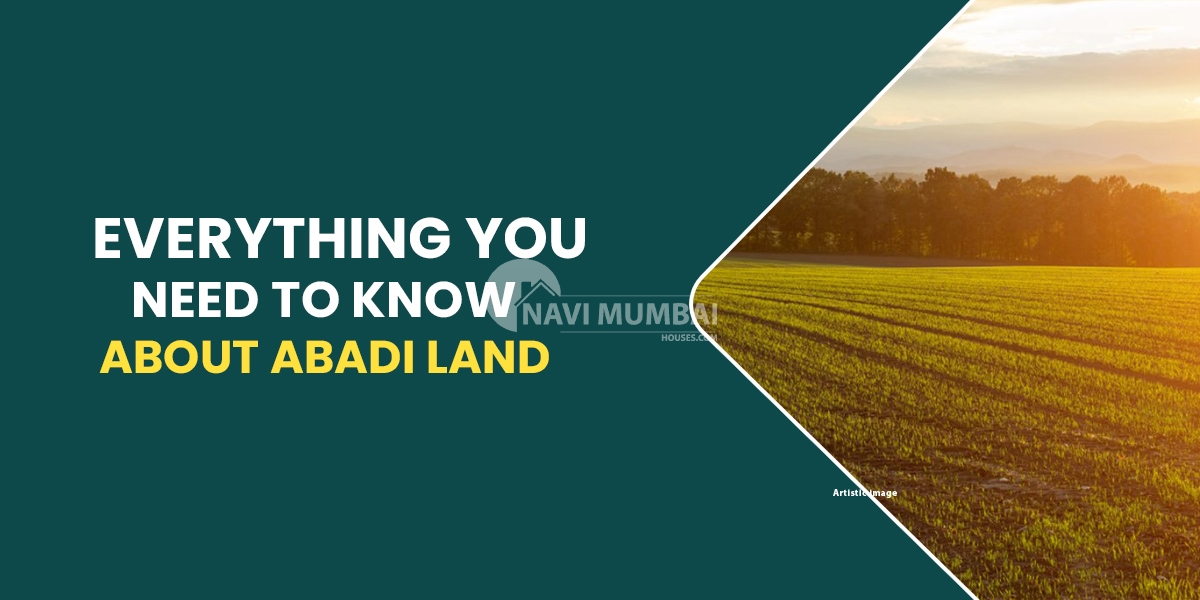
- January 24, 2023
- News
Everything You Need to Know About Abadi Land
You may have heard the phrase “Abadi land” frequently and wondered what it meant. Visit this blog to learn more about the phrase and its implications. An Abadi land, also known as a Nazul land, is owned by, belongs to, or was made accessible to a panchayat in Rajasthan in compliance with an order from the state government. The land is situated within the Panchayat circle’s populated areas. Panchayat will hold, administer, and manage the aforementioned property in its capacity as trustee. The Rajasthan Panchayati Raj Rules (RPRRs), 1996, which are applicable rules, control the sale, auction, purchase, possession, or other elements of Abadi land under PRIs. They were created in accordance with the 1994 Rajasthan Panchayati Raj Act (Act).
Are you searching for rent flat in bhandup?
Abadi Land’s history
40 Gram Panchayats (GPs) of 16 Panchayat Samitis (PSs), which was formed to strengthen the Panchayat System, granted 575 pattas between 2001 and 2006. Without knowing the index price, they did so through sales or conversations, incurring a loss of Rs. 3.21 crore. 905 pattas were given in 72 GPs of six PSs at nominal rates in contravention of regulations 143, 144, and 157 of the RPRRs, 1996. As a result, revenue was lost, amounting to Rs. 5.15 crore. The free or reduced land resulted in a loss of revenue of Rs 62.96 lakh. In contravention of regulations 158 (Proviso), 159 (2), & 162 of the RPRRs, 1996, the land was distributed to 47 GPs of six PSs.
The Abadi Land Rules
The guidelines listed below are just a few of the regulations that apply to Abadi land.
- The secretary (Gram Sevak) & sarpanch are required to sign the pattas of land in accordance with the RPRRs, 1996.
- The proceeds from the sale, rental, or production of goods on “Abadi land” shall be deposited into the Panchayat account. They’ll use it for initiatives aimed at socioeconomic development.
Why is it necessary to manage Abadi Land properly?
The majority of the Gram Panchayats’ (GPs’) income comes from the selling earnings and regularization fee from the sale of a village Abadi land. Therefore, effective management is required to stop revenue leakage at the source. They can achieve this by abiding by rules and using the appropriate rates. Additionally, keeping simple records and carrying out routine inspections will be beneficial.
Most recent Abadi Land Developments
The Union Cabinet has approved the National Land Monetization Corporation (NLMC). The Union Finance Minister announced it as a Special Purpose Vehicle (SPV) to handle the monetization of surplus land holdings of public sector undertakings in the Union Budget 2021–22. (PSU). By selling surplus, unused, or underutilized land assets, NLMC will make money off of resources belonging to the public and government sectors. Additionally, the Corporation will support the monetization of PSU-owned facilities that have ceased operations or are subject to a Strategic Disinvestment. To maximize these land holdings’ potential.
SVAMITVA is a Central Sector Plan under the Panchayati Raj Ministry. It was officially opened on April 24, National Panchayati Raj Day, by the honourable prime minister. It came after the trial phase of the plan, which was successfully completed in 9 states in 2020–2021. The programme represents a step in the right direction toward establishing clear property ownership in rurally populated (Abadi land) areas. Land parcels are mapped using drone technology. Along with the landowners receiving ownership rights (property cards/title deeds), village residents are awarded a “Record of Rights.”
In order to enhance the value of land-based assets, SVAMITVA and NLMC verify land valuations and make land transactions transparent. They are ambitious and thorough because they are able to map the “Abadi” areas of the 6.2 lakh villages spread throughout the country, where 68% of Indians live without any clear-cut land ownership or Record of Rights, or “Jamabandi,” as they are known.
Abadi Land Conclusion
The populous area of a hamlet, town, or city is referred to as a “Abadi area” & “Abadi land” according to the Rajasthan Land Revenue Act of 1956. The location of the hamlet, town, or city is included in this definition. The land set aside in accordance with Section 92 of the same Act is also included. Whether or not a building has been constructed there, it may be for the growth of Abadi there as well as property held for construction purposes.
You’re looking for Projects in kalamboli we have the Best Properties In Navi Mumbai Like Ready to Move:https://navimumbaihouses.com/properties/search/kalamboli/
If you want daily property update details please follow us on Facebook Page / YouTube Channel / Twitter









